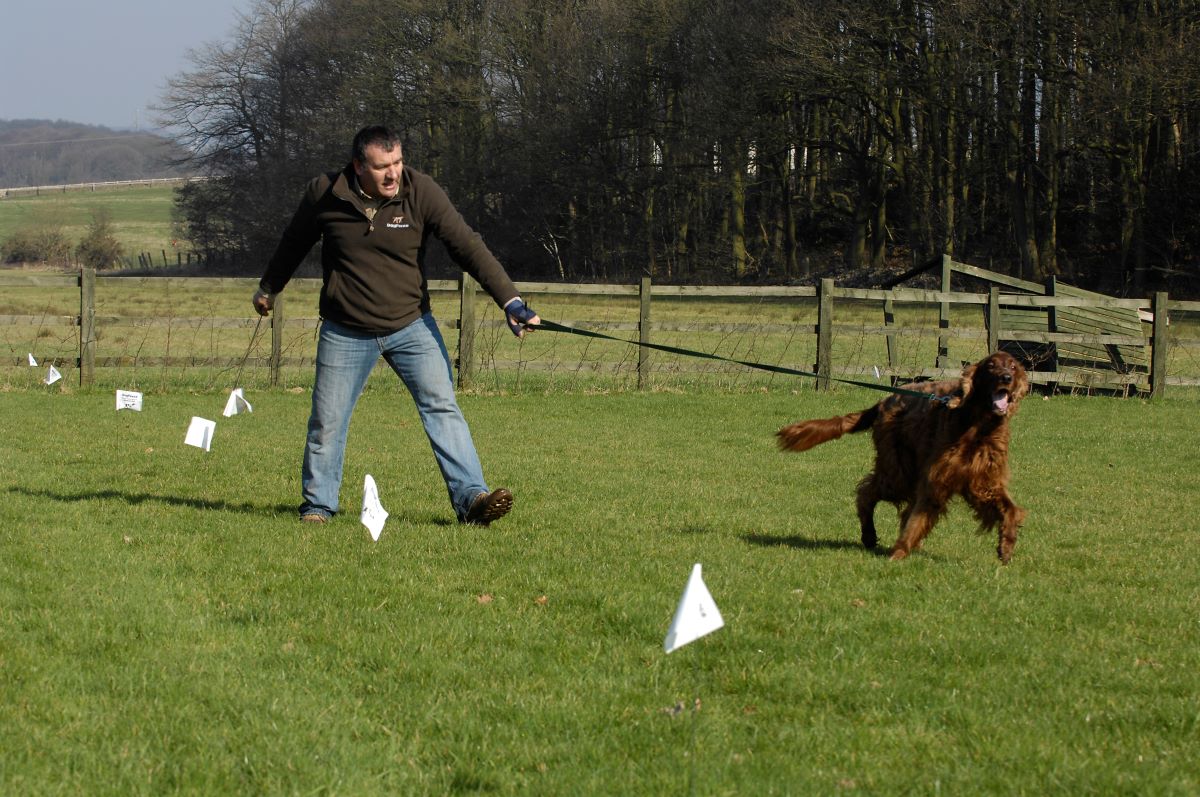

Articles
How To Train A Dog On An Electric Fence
Modified: December 7, 2023
Looking for articles on how to train a dog on an electric fence? Discover effective techniques to ensure your pet's safety and obedience in this comprehensive guide.
(Many of the links in this article redirect to a specific reviewed product. Your purchase of these products through affiliate links helps to generate commission for Storables.com, at no extra cost. Learn more)
Introduction
Training dogs to stay within specific boundaries can be a challenging task for pet owners. Electric fences provide an effective solution to keep dogs safely contained without the need for physical barriers. These innovative systems utilize underground wires or wireless signals to create a virtual boundary that emits a warning beep and, if necessary, a mild static correction when the dog approaches the boundary. While electric fences can be a valuable tool for dog owners, proper training is crucial for the successful and humane use of these systems.
In this article, we will guide you through the process of training your dog on an electric fence. By following the steps outlined here, you can ensure that your furry friend understands the boundaries and stays safe within the designated area. We will cover everything from choosing the right electric fence system to troubleshooting common issues that may arise during the training process.
Before we dive into the training process, it’s important to understand how electric fences work and why they can be an effective solution for dog owners. Unlike traditional fences, electric fences do not physically restrict dogs’ movement. Instead, they rely on a combination of auditory cues and mild static corrections to deter dogs from crossing the boundaries.
Electric fence systems consist of a transmitter, boundary wires, and a special collar worn by the dog. The boundary wires are buried underground or positioned above ground to create a customizable perimeter. The transmitter sends signals to the collar, which emits a warning beep when the dog approaches the boundary. If the dog continues to approach the boundary, the collar delivers a mild static correction, which is designed to be unpleasant but not harmful.
One of the significant advantages of electric fences is their versatility. These systems can be adapted to fit various property sizes and shapes, and they can be easily installed or reconfigured when needed. Electric fences also do not obstruct the view, allowing dogs to enjoy their surroundings while remaining contained. However, it’s important to note that electric fences may not be suitable for all dogs, especially those with certain medical conditions or highly reactive temperaments. Consult with your veterinarian or a professional dog trainer before using an electric fence.
In the following sections, we will provide a step-by-step guide on how to train your dog on an electric fence. We will explore each step in detail, sharing tips and best practices to ensure a successful training experience for both you and your furry friend. Let’s dive in and get started on this exciting journey of training your dog on an electric fence!
Key Takeaways:
- Proper preparation, gradual introduction of the electric fence collar, and consistent positive reinforcement are essential for successful and humane training. Safety, patience, and proactive troubleshooting are key to overcoming challenges.
- Understanding the system, setting clear boundaries, and using positive reinforcement create a safe and secure environment for your dog. Consistency, patience, and a proactive problem-solving approach are crucial for effective electric fence training.
Read more: How To Train A Dog On An Invisible Fence
Understanding Electric Fences for Dogs
Electric fences for dogs are a popular and effective way to protect your pet while allowing them the freedom to roam within a designated area. It’s essential to have a clear understanding of how electric fences work to ensure their proper usage and the safety of your furry friend.
The primary components of an electric fence system for dogs include a transmitter, boundary wires, and a specialized collar. The transmitter is the central control unit that emits signals to the boundary wires. These wires are either buried underground or placed above ground to create a perimeter around the desired area.
The dog wears a collar that is linked to the transmitter. The collar receives signals from the wires and emits various cues to train the dog to stay within the designated area. These cues usually include a warning beep and, if necessary, a mild static correction.
The warning beep is the initial cue that alerts the dog when they approach the boundary. This audible signal serves as a pre-warning to let the dog know that they are nearing the limit of their designated space. It gives them a chance to turn back before receiving any form of correction.
If the dog continues to move closer to the boundary after the warning beep, a mild static correction is delivered through the collar. This correction is designed to startle the dog and discourage them from crossing the boundary. The static correction is not harmful or painful, but rather a deterrent that promotes the dog’s safety by discouraging them from going beyond the established limits.
The level of static correction is usually adjustable on the collar, allowing you to find the appropriate intensity for your dog’s temperament and sensitivity. It is important to note that the static correction should never be used as a punishment or a means to cause harm to your pet. It should be used solely as a tool to ensure your dog’s safety and proper boundary training.
Electric fences are available in both wired and wireless variants, and they offer different benefits and considerations. Wired electric fence systems require the burying of wires around the perimeter of your property, creating a physical boundary. This option is ideal for homeowners who want a customizable and reliable system that can handle larger areas.
Wireless electric fences, on the other hand, use radio signals to establish the boundary without the need for physical wires. These systems are portable, making them suitable for those who may move or want a more flexible fencing solution. However, wireless fences may have limitations regarding their coverage area and environmental factors, such as interference from trees or buildings.
Understanding the workings of electric fences for dogs is crucial before beginning the training process. It is essential to ensure that the system is properly set up and the collar is adjusted to your dog’s needs. By comprehending how the system operates and the purpose of the various cues and corrections, you can train your dog effectively and provide them with a safe and secure environment.
Choosing the Right Electric Fence System
Choosing the right electric fence system for your dog is an important decision that requires careful consideration. With numerous options available in the market, it’s crucial to select a system that suits your specific needs, property size, and your dog’s temperament. Here are some key factors to consider when choosing the right electric fence system:
System Type: Electric fence systems come in two main types: wired and wireless. Wired systems involve burying boundary wires around the perimeter of your property, creating a physical boundary for your dog. This option is ideal for homeowners who want a customizable and reliable system that can accommodate larger areas. Wireless systems, on the other hand, use radio signals to establish the boundary without the need for physical wires. These systems are portable and suitable for those who may move or want a more versatile fencing solution.
Property Size: Consider the size of your property and the coverage area provided by the electric fence system. Ensure that the system you choose can cover the entire area you want to designate for your dog. Some systems allow you to expand the coverage by adding additional wires or signal boosters, which can be beneficial for larger properties.
Animal Specific Features: Different electric fence systems offer various features specific to the type and size of animals they are designed for. Some systems have specific settings for small dogs or large breeds, while others may have multiple correction levels to cater to dogs with different temperaments. Consider your dog’s size, breed, and temperament to ensure that the system you choose is compatible and appropriate for your furry friend.
Collar Adjustability: Check if the electric fence system allows you to adjust the collar’s settings, including the level of static correction. Dogs have different sensitivities, and it’s important to find a collar that can be tailored to your dog’s needs. Being able to customize the correction level ensures that it is both effective and humane for your dog during the training process.
Battery Life: Electric fence collars are powered by batteries, and the battery life can vary depending on the system. Look for a system that offers a decent battery life, ideally lasting several months, to minimize the frequency of battery replacements. Some systems also have low battery indicators, alerting you when it’s time to replace the battery.
Warranty and Customer Support: Research the warranty and customer support offered by the electric fence system manufacturer. A system that comes with a warranty provides peace of mind, knowing that you are covered in case of any manufacturing defects or malfunctions. Additionally, reliable customer support can assist you with any questions or concerns you may have during the installation or training process.
Budget: Set a budget for your electric fence system and consider the long-term costs. Keep in mind that while cheaper options may be tempting, they may lack the durability or features that are important for effective training. It’s recommended to invest in a quality system that meets your needs to ensure a successful and lasting training experience.
By taking these factors into account, you can make an informed decision when choosing the right electric fence system for your dog. Remember to select a system that provides the necessary features, adaptability, and reliability to meet your dog’s needs while keeping them safe and secure within the designated boundaries.
Preparing Your Dog for Electric Fence Training
Before you begin training your dog on an electric fence, it’s important to make sure they are properly prepared for the process. This preparation will help set the foundation for effective training and ensure your dog’s safety and well-being. Here are some steps to follow when preparing your dog for electric fence training:
Veterinary Check-up: Schedule a visit to the veterinarian to ensure your dog is in good health. This check-up will help identify any underlying medical conditions or behavioral issues that may affect the training process. It’s important to address these concerns before starting the training to ensure a smooth and successful experience.
Basic Obedience Training: It’s beneficial to teach your dog basic obedience commands such as “sit,” “stay,” and “come” before starting electric fence training. These commands will serve as building blocks for boundary training and make the training process easier and more effective. Focus on positive reinforcement techniques to encourage your dog’s cooperation and create a positive association with obedience.
Introduce Collar and Fence Boundary: Allow your dog to get used to wearing the electric fence collar before starting the training. This will help them become comfortable with the sensation of wearing the collar and reduce any potential anxiety or discomfort. Additionally, introduce your dog to the boundaries of the electric fence by walking them along the perimeter. This will give them a visual and physical understanding of the boundaries before training begins.
Positive Association: Create a positive association with the electric fence collar by associating it with something enjoyable for your dog. For example, you can give them treats, praise, or a favorite toy while they are wearing the collar. This positive reinforcement will help your dog associate the collar with positive experiences and make the training process more enjoyable for them.
Remove Other Physical Barriers: If your dog is used to physical barriers like traditional fences or gates, gradually remove these barriers while reinforcing the new electric fence boundaries. This will help your dog understand the transition from physical barriers to the virtual boundaries of the electric fence system.
Clear Communication: Establish clear communication with all family members or anyone who interacts with your dog to ensure consistency during the training process. Everyone involved should understand the rules and boundaries set by the electric fence system and adhere to the training guidelines. Consistency is key in ensuring that your dog fully understands and respects the boundaries to keep them safe.
Patience and Calmness: Electric fence training requires patience and a calm demeanor. Dogs can sense your emotions, so maintaining a positive and relaxed attitude throughout the training process will help create a stress-free environment. Avoid getting frustrated or tense if your dog makes mistakes or takes longer to grasp the concept. Each dog learns at their own pace, and with time, patience, and consistent training, they will understand the boundaries of the electric fence system.
By following these steps and preparing your dog adequately, you can ensure a smooth and positive training experience with the electric fence system. Remember to always prioritize your dog’s safety, comfort, and well-being throughout the training process, and celebrate their progress and achievements along the way. With proper preparation and dedication, you and your furry friend will soon enjoy the benefits of a well-trained dog within the boundaries of your electric fence system.
Step 1: Establishing Boundaries and Installing the Fence
Establishing clear boundaries and installing the electric fence system properly is the first step in training your dog. This step is crucial to ensure that your dog understands the designated area and can distinguish it from the rest of the surroundings. Follow these guidelines to establish boundaries and install the electric fence:
1. Plan and Measure: Begin by determining the area where you want to create the boundaries for your dog. Measure the perimeter and mark the boundaries accordingly. Consider any specific landscape features or obstacles that may require additional planning or adjustments in the boundary layout.
2. Choose a Suitable Location for the Transmitter: The transmitter is the central control unit of the electric fence system. Select a location near a power outlet and protected from weather elements. Mount the transmitter on a wall or position it in a secure and accessible area.
3. Install Boundary Wires: Depending on the type of system you have, either bury the boundary wires underground or affix them above ground along the planned perimeter. Ensure that the wires are secured properly to withstand environmental conditions and any potential interference.
4. Connect and Test the Wires: Connect the boundary wires to the transmitter according to the manufacturer’s instructions. Test the system using the testing tool provided by the manufacturer to ensure that the wires are properly connected and functional. Fix any connectivity issues before proceeding.
5. Set the Boundary Width and Warning Zone: Adjust the transmitter settings to define the desired boundary width and warning zone. The boundary width determines how far your dog can approach the boundary before receiving a static correction, while the warning zone triggers the warning beep. Follow the specific instructions provided by the manufacturer to set these parameters accurately.
6. Mark the Boundary with Visual Cues: Place visual cues along the boundary to help your dog visually recognize the limits. These can be flags or other visible markers that indicate the boundary area. These cues will assist your dog in understanding the boundary and provide a visual reference during the training process.
7. Additional Precautions: Take any necessary precautions to ensure the safety of your dog and prevent them from escaping or entering restricted areas. For example, if you have a gate or other access points, secure them with physical barriers or additional training measures to prevent your dog from inadvertently leaving the designated area.
It’s important to carefully follow the manufacturer’s instructions and guidelines for installing the electric fence system. If unsure about any step, refer to the provided manuals or consult with a professional to ensure proper installation and functionality.
Remember, the boundaries and installation of the electric fence system create the foundation for training your dog. It is crucial to establish clear and consistent boundaries to help your dog understand their limits and keep them safe within the designated area. With the boundaries properly set up, you are now ready to move on to the next step: introducing your dog to the electric fence collar and its signals.
Read more: How Much Is An Electric Dog Fence
Step 2: Introducing Your Dog to the Electric Fence Collar
Once you have established the boundaries and installed the electric fence system, the next step is to introduce your dog to the electric fence collar. This phase is crucial as it familiarizes your dog with the collar and prepares them for the upcoming training. Follow these guidelines to properly introduce your dog to the electric fence collar:
1. Choose a Calm and Positive Environment: Select a quiet and relaxed area where you can introduce the electric fence collar to your dog without distractions. This will help your dog focus on the process and associate the collar with positive experiences.
2. Allow Your Dog to Sniff and Investigate: Before putting the collar on your dog, give them an opportunity to sniff and investigate it. Allow them to approach the collar voluntarily, creating a positive association and reducing any initial hesitation or fear.
3. Gradually Introduce the Collar: Start by holding the collar near your dog’s neck without fastening it. Offer treats, praise, or petting to create positive reinforcement while doing so. Gradually bring the collar closer to your dog’s neck, keeping the interaction positive and gentle.
4. Attach the Collar: Once your dog is comfortable with the collar being near their neck, proceed to fasten it loosely. Ensure that the collar fits snugly but not too tight. Also, make sure that the contact points on the collar are in direct contact with your dog’s skin for proper functionality.
5. Observe Your Dog’s Reaction: Once the collar is attached, observe your dog’s reaction. Some dogs may show signs of discomfort, such as scratching at the collar or trying to remove it. If your dog appears uncomfortable, take a step back and proceed at a slower pace, gradually increasing the time they wear the collar.
6. Encourage Positive Experiences: While your dog is wearing the collar, engage them in activities they enjoy. Offer treats, play games, or take them for a walk to create positive associations with the collar and make the experience enjoyable for them.
7. Monitor Your Dog’s Comfort: Continuously monitor your dog to ensure that they are comfortable and not experiencing any discomfort or irritation from the collar. If you notice any signs of distress or irritation, remove the collar and consult with a professional or the manufacturer for guidance.
It’s important to introduce the electric fence collar gradually and at a pace that is comfortable for your dog. Rushing the process can lead to negative associations and hinder the training progress. Remember to maintain a calm and positive demeanor throughout the introduction process to reassure your dog and build trust.
Once your dog is comfortable wearing the collar, you can proceed to the next step: teaching your dog to recognize the warning beep of the electric fence system. Building a strong foundation will set you and your dog up for success in the training process ahead.
Step 3: Teaching Your Dog to Recognize the Warning Beep
Now that your dog is comfortable wearing the electric fence collar, it’s time to teach them to recognize the warning beep. This step is crucial as it alerts your dog that they are approaching the boundaries of the designated area. Follow these guidelines to effectively teach your dog to recognize the warning beep of the electric fence system:
1. Create a Controlled Training Environment: Start the training in a controlled environment with minimal distractions. This could be a quiet room indoors or a small enclosed area outdoors. Choose a space where your dog can focus on the training without being overwhelmed.
2. Walk Your Dog Towards the Boundary: With the collar securely fastened, gently and slowly walk your dog towards the boundary. As you approach the boundary, listen for the warning beep emitted by the collar and pay attention to your dog’s reaction.
3. Observe Your Dog’s Response: Notice how your dog reacts when they hear the warning beep. They may pause, tilt their head, or show signs of curiosity. These are typical responses as they try to understand the sound and its significance. Remain calm and observe your dog’s behavior.
4. Use Verbal Cues: As you approach the boundary and your dog hears the warning beep, use verbal cues such as “stop” or “no” in a calm yet firm voice. The purpose is to associate the warning beep with a command that communicates to your dog to halt or retreat.
5. Reward and Praise: When your dog shows the desired response by pausing or turning away from the boundary upon hearing the warning beep and receiving your verbal cue, immediately praise and reward them with treats or verbal praise. Positive reinforcement strengthens the association between the warning beep, the verbal cue, and the appropriate response.
6. Repeat and Gradually Increase Distance: Repeat the training sessions, gradually increasing the distance towards the boundary each time. This gradual approach allows your dog to acclimate and understand the correlation between the warning beep and the required response.
7. Consistency is Key: Be consistent in your training approach. Ensure that everyone involved in your dog’s care understands and follows the same training techniques and verbal cues. Consistency helps your dog understand and reinforce the learned behavior across different environments and situations.
Training your dog to recognize the warning beep may take time and patience. Each dog learns at their own pace, so be mindful of your dog’s progress and adjust the training accordingly. Remember to keep the training sessions positive and rewarding, as this will motivate your dog and make the learning process enjoyable for both of you.
Once your dog consistently recognizes and responds appropriately to the warning beep, you can move on to the next step: adding static correction to the training. This step helps reinforce the boundaries further and strengthens your dog’s understanding of the consequences associated with crossing the boundary.
When training a dog on an electric fence, start by introducing the dog to the boundary with the fence turned off. Use positive reinforcement and gradually increase distractions to teach the dog to stay within the boundary.
Step 4: Adding Static Correction to the Training
In this step, the focus is on adding static correction to the training process for your dog. This correction serves as a deterrent to prevent them from crossing the boundaries of the electric fence system. Follow these guidelines to effectively add static correction to the training:
1. Understand Static Correction Levels: Familiarize yourself with the different levels of static correction available on the electric fence collar. Each dog has unique needs, so it’s essential to choose the appropriate level that provides an effective yet humane deterrent. Start with the lowest level and gradually increase it if necessary.
2. Continue with Warning Beep Training: Maintain the training approach outlined in Step 3 for teaching your dog to recognize the warning beep. Walk your dog towards the boundary, and as they approach, the collar will emit the warning beep. Use your verbal cue to command your dog to halt or retreat.
3. Use Static Correction as a Reinforcement: If your dog ignores the warning beep and continues towards the boundary, the collar will deliver a static correction. This correction is designed to startle your dog, serving as a reinforcement that crossing the boundary is undesirable.
4. Observe Your Dog’s Reaction: Pay attention to how your dog responds to the static correction. They may show signs of surprise or discomfort, which is normal. Remember, the correction should be unpleasant but not harmful to your dog. Observe their reaction to ensure their safety and well-being.
5. Offer Comfort and Reassurance: After the static correction, reassure your dog and offer comfort through gentle words or physical touch. Show them that you are there to support them during the training process. This helps build trust and reinforces that the correction is associated with crossing the boundary, not a punishment from you.
6. Consistency and Timing: Be consistent in your training approach and timing. Deliver the static correction immediately after the warning beep and the verbal cue if your dog continues towards the boundary. This ensures that your dog understands the cause-and-effect relationship between their actions and the consequence of the correction.
7. Continue Positive Reinforcement: Even when the static correction is introduced, continue to reinforce positive behavior through rewards and praise for appropriate responses to the warning beep. This dual approach reinforces desired behaviors and helps your dog understand the boundaries effectively.
Remember, the static correction should only be used as a reinforcement and not as a form of punishment or harm. Its purpose is to deter your dog from crossing the boundaries and ensure their safety. Use the static correction judiciously and always prioritize your dog’s well-being throughout the training process.
With consistent training and positive reinforcement, your dog will learn to associate the warning beep and static correction with the boundaries of the electric fence system. This understanding will help them stay within the designated area and provide them with a safe and secure environment to enjoy.
Step 5: Reinforcing Training with Positive Reinforcement
Positive reinforcement is a powerful tool in dog training. In this step, we will focus on reinforcing the training on the electric fence system with positive reinforcement. This step will help solidify your dog’s understanding of the boundaries and reinforce their desire to stay within the designated area. Follow these guidelines to effectively reinforce training with positive reinforcement:
1. Use Rewards: Incorporate treats, praise, or a favorite toy as rewards for your dog’s appropriate behavior within the boundaries. Whenever your dog stays within the designated area, provide immediate rewards to reinforce their understanding of the desired behavior.
2. Be Generous with Praise: Along with treats or toys, provide plenty of verbal praise and enthusiastic encouragement. Celebrate your dog’s good behavior and let them know how proud you are of their efforts. Positive verbal cues and a cheerful tone will enhance the effectiveness of the reinforcement.
3. Consistency is Key: Be consistent in your use of positive reinforcement. Reward your dog every time they demonstrate the desired behavior of staying within the boundaries. Consistency helps your dog understand that staying within the designated area is associated with positive outcomes.
4. Mix Up the Rewards: Vary the rewards you offer to keep the training engaging and exciting for your dog. Switch between different types of treats, alternate between verbal praise and physical affection, or introduce new toys as occasional rewards. This variety will keep your dog motivated and interested in the training process.
5. Engage in Interactive Play: Dedicate regular playtime within the boundaries of the electric fence system. Engage your dog in fun activities such as fetch or engaging training games. This helps create positive associations with the designated area and encourages your dog to stay within the boundaries voluntarily.
6. Provide Mental Stimulation: Mental stimulation is crucial for a well-rounded and happy dog. Incorporate mental enrichment activities within the boundaries, such as puzzle toys or scent games. These activities not only provide mental stimulation but also encourage your dog to remain within the designated area to engage in the exciting challenges.
7. Adjust Rewards Over Time: As your dog becomes more accustomed to the electric fence system and consistently stays within the boundaries, gradually decrease the frequency of tangible rewards while still offering verbal praise and affection. This shift in reinforcement helps reinforce the long-term behavior of staying within the boundaries without relying solely on treats or toys.
By reinforcing the training with positive reinforcement, you foster a strong bond with your dog and create an environment where they willingly respect and stay within the boundaries. The combination of clear boundaries, effective training techniques, and positive reinforcement sets the stage for a successful and harmonious relationship with your dog within the electric fence system.
Continue to celebrate your dog’s progress and achievements as they navigate their newfound understanding of the boundaries. With consistency and positive reinforcement, you and your furry friend will enjoy the benefits of a well-trained dog while ensuring their safety and happiness in the designated area.
Read more: How To Train A Dog To Use Fake Grass
Common Mistakes to Avoid During Electric Fence Training
While training your dog on an electric fence, it’s important to be aware of common mistakes that can hinder the training process and potentially compromise your dog’s safety. By avoiding these mistakes, you can ensure a smooth and successful training experience. Here are some common mistakes to avoid during electric fence training:
1. Inadequate Preparation: Failing to adequately prepare yourself and your dog for electric fence training can lead to confusion and ineffective training. Take the time to research and understand the training process, follow the manufacturer’s instructions carefully, and ensure your dog is in good health before beginning the training.
2. Skipping the Introduction Phase: Introducing your dog to the electric fence collar and the concept of boundaries is a crucial first step. Skipping or rushing through this phase can result in confusion and anxiety for your dog. Take the necessary time to introduce the collar gradually and allow your dog to acclimate to wearing it before moving on to the training steps.
3. Inconsistent Training Approach: Consistency is vital in dog training. Inconsistencies in the training approach, commands, or rules can confuse your dog and undermine the effectiveness of the training. Ensure that all family members and those interacting with your dog are on the same page and follow the training guidelines consistently.
4. Using the Static Correction as Punishment: The static correction is not meant to be a form of punishment, but rather a deterrent to reinforce the boundaries. Avoid using the static correction as a means of punishment or inflicting harm on your dog. It should be used as a reinforcement to help them understand and respect the boundaries of the electric fence system.
5. Inadequate Positive Reinforcement: Positive reinforcement is a crucial aspect of electric fence training. Failing to provide consistent and appropriate positive reinforcement for your dog’s desired behavior within the boundaries can diminish their motivation to stay within the designated area. Make sure to reward your dog with treats, praise, and playtime when they exhibit the correct behavior.
6. Neglecting Training Time and Patience: Training your dog on an electric fence requires time, patience, and consistency. Neglecting or rushing through the training process can lead to confusion and may result in your dog not fully understanding the boundaries. Dedicate regular training sessions, be patient with your dog’s progress, and adjust the training pace based on their individual needs.
7. Failing to Troubleshoot Issues: If you encounter any issues during the training process, such as your dog consistently escaping the boundaries or showing fear towards the collar, it’s important to troubleshoot and address these problems promptly. Seek guidance from professionals, consult with the manufacturer, or consider working with a professional dog trainer to overcome training hurdles.
By avoiding these common mistakes, you can ensure a successful and positive training experience for both you and your dog. Remember to prioritize your dog’s safety and well-being throughout the training process, and remain patient and consistent in your approach. With proper training and guidance, your dog will understand and respect the boundaries of the electric fence system, providing them with a safe and secure environment to thrive in.
Troubleshooting and Problem-solving
While electric fence training can be effective, it’s not uncommon to encounter challenges or issues along the way. Understanding how to troubleshoot and problem-solve can help overcome obstacles and ensure a successful training experience. Here are some common troubleshooting steps for electric fence training:
1. Poor Boundary Signal: If you notice that the boundary signal is weak or inconsistent, check the transmitter connection and ensure that the boundary wires are properly installed and not damaged. Adjust the transmitter settings as indicated by the manufacturer to optimize the signal strength. If the issue persists, contact the manufacturer for further assistance.
2. Inconsistent Warning Beep: If your dog is not consistently responding to the warning beep, it may indicate that they haven’t fully associated the beep with the boundary. Review the training steps and make sure that your dog understands the correlation between the beep, the verbal cue, and the requirement to retreat from the boundary. Reinforce the training with additional repetitions and positive reinforcement.
3. Escape Attempts: If your dog continues to attempt to escape or crosses the boundary despite the warning beep and static correction, it may indicate that the static correction level is not sufficient. Gradually increase the static correction level on the collar, testing to find the appropriate intensity that acts as a stronger deterrent without causing harm or distress to your dog.
4. Fear or Anxiety: Some dogs may exhibit fear or anxiety towards the electric fence collar or the boundary. To address this, reinforce positive associations with the collar by offering treats, praise, and rewards during the training process. Take it slow and give your dog time to acclimate to the collar gradually. If fear or anxiety persists, consult with a professional dog trainer or behaviorist for additional guidance.
5. Environmental Interference: Environmental factors such as nearby power lines or dense vegetation can interfere with the proper functioning of the electric fence system. Ensure that the boundary wires are not positioned too close to power lines or other electrical sources. Trim any vegetation that may cause signal disruptions or consider using a wireless system as an alternative.
6. Malfunctioning Collar: If the collar is not working as expected or experiencing technical issues, check the battery connection, replace the battery if needed, and ensure that the collar is properly synchronized with the transmitter. If the problem persists, contact the manufacturer for troubleshooting assistance or possible replacement.
7. Seeking Professional Help: If you have exhausted troubleshooting options or encounter complex issues during the training process, consider seeking professional help from a certified dog trainer or behaviorist. They can provide tailored guidance, appropriate solutions, and hands-on support to address any specific challenges you may be facing.
Remember, electric fence training requires patience, consistency, and a proactive problem-solving approach. Stay observant, address issues promptly, and adapt the training techniques as needed. With the right troubleshooting and problem-solving strategies, you can overcome challenges and ensure a successful electric fence training experience for you and your beloved furry companion.
Frequently Asked Questions (FAQs)
Here are some commonly asked questions about electric fence training for dogs:
Q: Is an electric fence safe for dogs?
A: When used properly, electric fences are safe for dogs. The static correction is designed to be unpleasant but not harmful. However, it’s important to follow the manufacturer’s instructions and ensure your dog’s comfort and well-being throughout the training process.
Q: Will an electric fence hurt or traumatize my dog?
A: The static correction of an electric fence collar is designed to startle your dog, but it should not cause harm or trauma. The intensity should be adjusted appropriately for your dog’s size and temperament. Positive reinforcement and proper training techniques will help create a positive association with the electric fence system.
Q: Can any breed of dog be trained on an electric fence?
A: In general, most breeds of dogs can be trained on an electric fence. However, it’s important to consider a few factors such as their temperament and sensitivity level. Some highly reactive or anxious dogs may not be suitable for this type of training. Consult with professionals to assess whether an electric fence is suitable for your dog’s specific needs.
Q: How long does it take to train a dog on an electric fence?
A: The training duration can vary depending on your dog’s individual learning abilities, temperament, and previous training experiences. Some dogs may learn quickly and adapt to the electric fence system within a few weeks, while others may require more time. Consistency, patience, and positive reinforcement are key to successful training.
Q: Can puppies be trained on an electric fence?
A: Puppies can be trained on an electric fence, but it is recommended to wait until they are at least six months old or have reached an appropriate size. Puppies should have a good understanding of basic obedience commands and be physically mature enough to handle the training process.
Q: Can other animals or people be affected by the electric fence system?
A: Electric fence systems are designed to affect only the animals wearing the collar. The system emits signals that are specifically picked up by the collar, ensuring that other animals or people nearby are not affected.
Q: Can I use an electric fence if I have multiple dogs?
A: Yes, electric fence systems can be used with multiple dogs. Each dog will need to wear their own collar, and individual training sessions should be conducted to familiarize each dog with the system and their boundaries.
Remember, every dog is unique, and it’s important to consider their specific needs and behavior when deciding to use an electric fence. Consult with professionals, follow the manufacturer’s instructions, and prioritize your dog’s safety and well-being throughout the training process.
Conclusion
Training your dog on an electric fence can provide a safe and effective solution for keeping them within designated boundaries while allowing them the freedom to roam. By following the steps outlined in this guide, you can ensure a successful and humane training experience for both you and your furry friend.
Starting with the establishment of boundaries and the proper installation of the electric fence system, you create a foundation for training. The gradual introduction of the electric fence collar, along with positive reinforcement, helps your dog become familiar with the system and develop a positive association with it.
The training process involves teaching your dog to recognize the warning beep, adding static correction as a reinforcement, and reinforcing the training with positive reinforcement. Consistency, patience, and a proactive problem-solving approach are key to overcoming obstacles and ensuring the effectiveness of the training.
It is essential to remember that the ultimate goal of electric fence training is to create a safe and secure environment for your dog. Safety should always be a priority, and the static correction should never be used as a form of punishment or harm. Instead, it should be used as a deterrent to reinforce the boundaries and provide your dog with a clear understanding of the consequences of crossing them.
Additionally, gathering information and seeking professional guidance when needed will help you navigate the training process more effectively. Remember to consult with your veterinarian or a professional dog trainer if you have any specific concerns or questions regarding your dog’s individual needs.
With consistent training, positive reinforcement, and a genuine commitment to your dog’s well-being, you can create a successful and harmonious partnership with your furry companion within the boundaries of the electric fence system. Enjoy the peace of mind that comes from knowing your dog is safe and secure while enjoying the freedom to explore their designated area.
Frequently Asked Questions about How To Train A Dog On An Electric Fence
Was this page helpful?
At Storables.com, we guarantee accurate and reliable information. Our content, validated by Expert Board Contributors, is crafted following stringent Editorial Policies. We're committed to providing you with well-researched, expert-backed insights for all your informational needs.




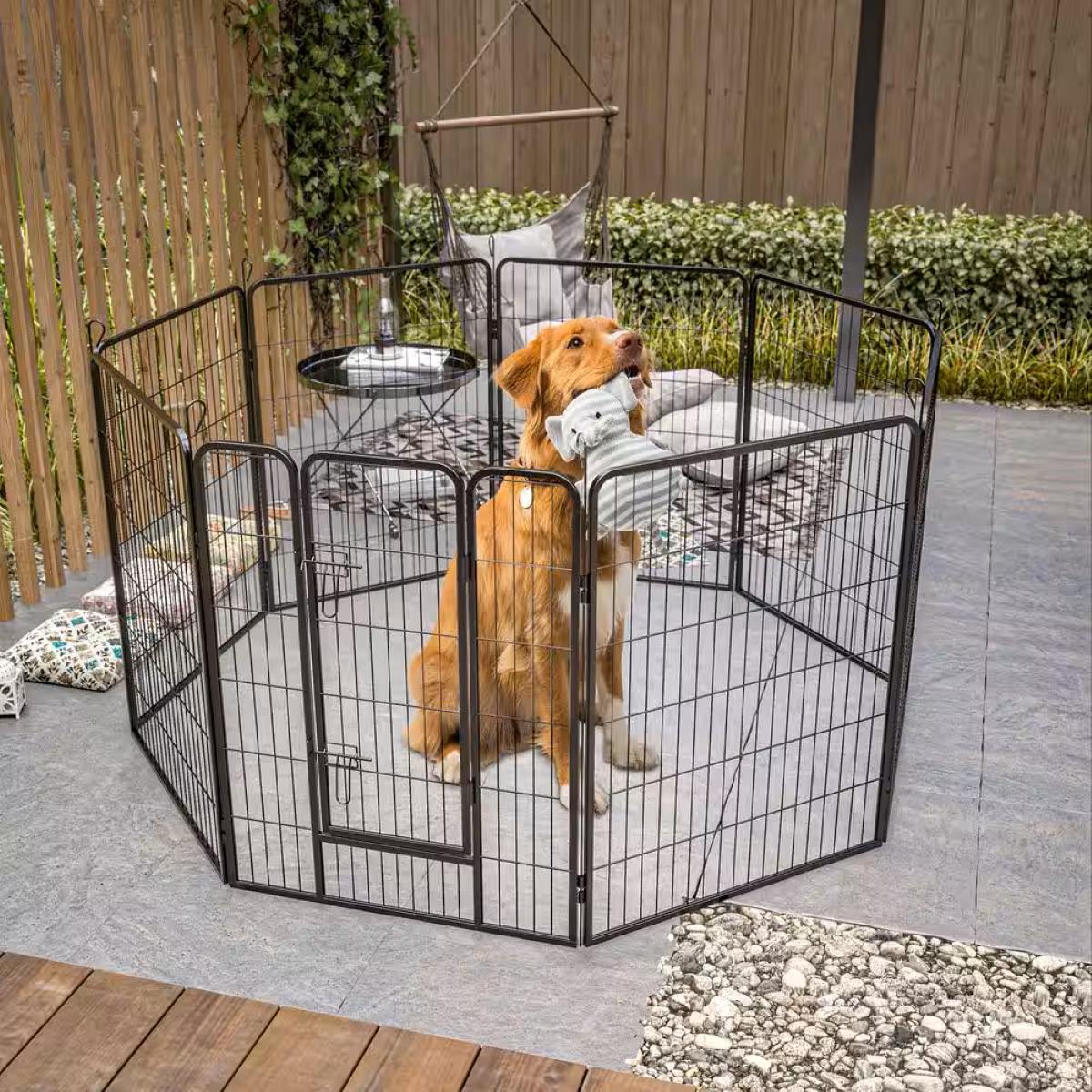





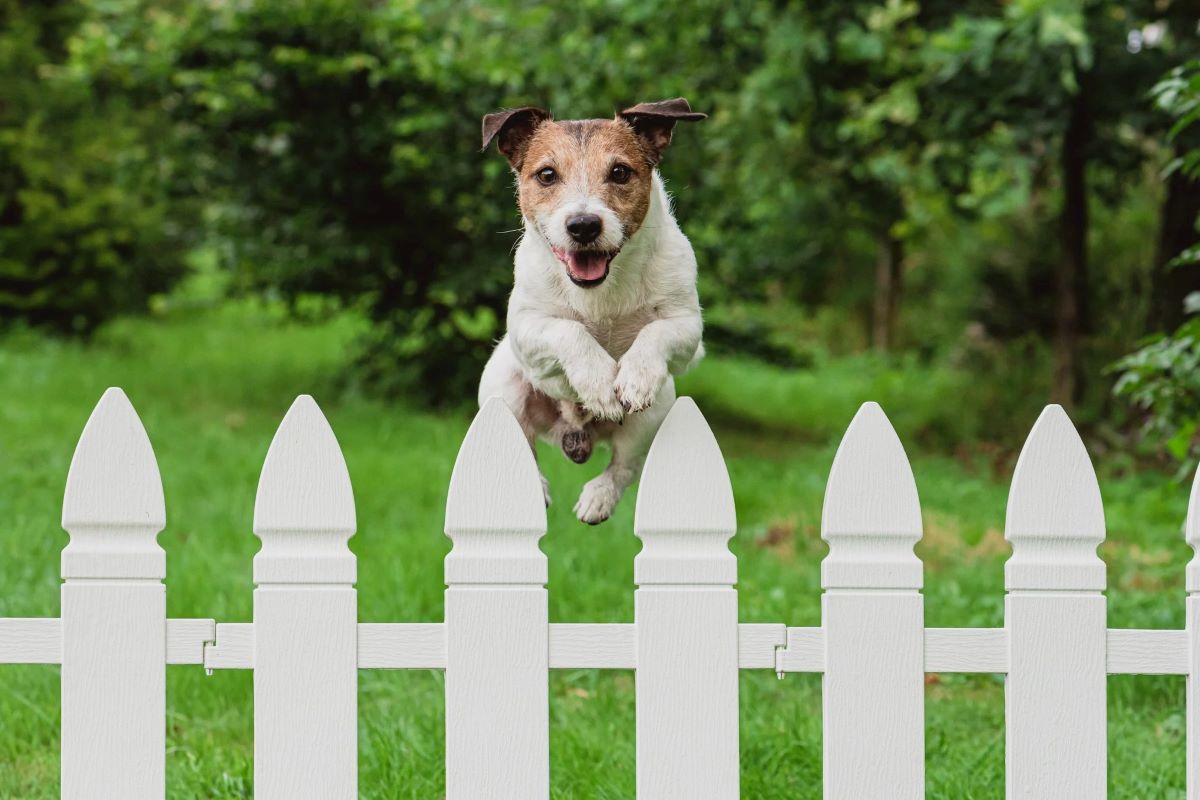
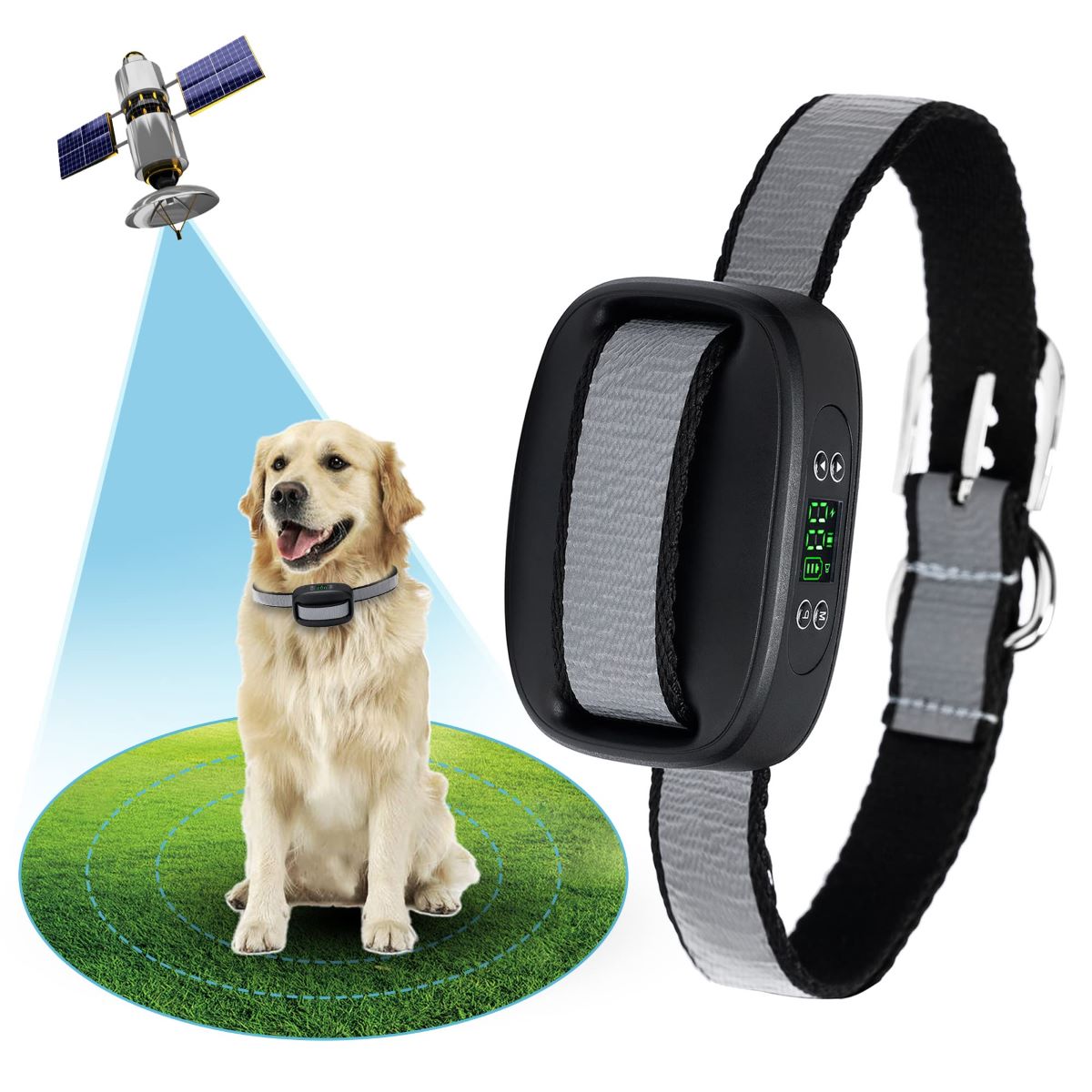
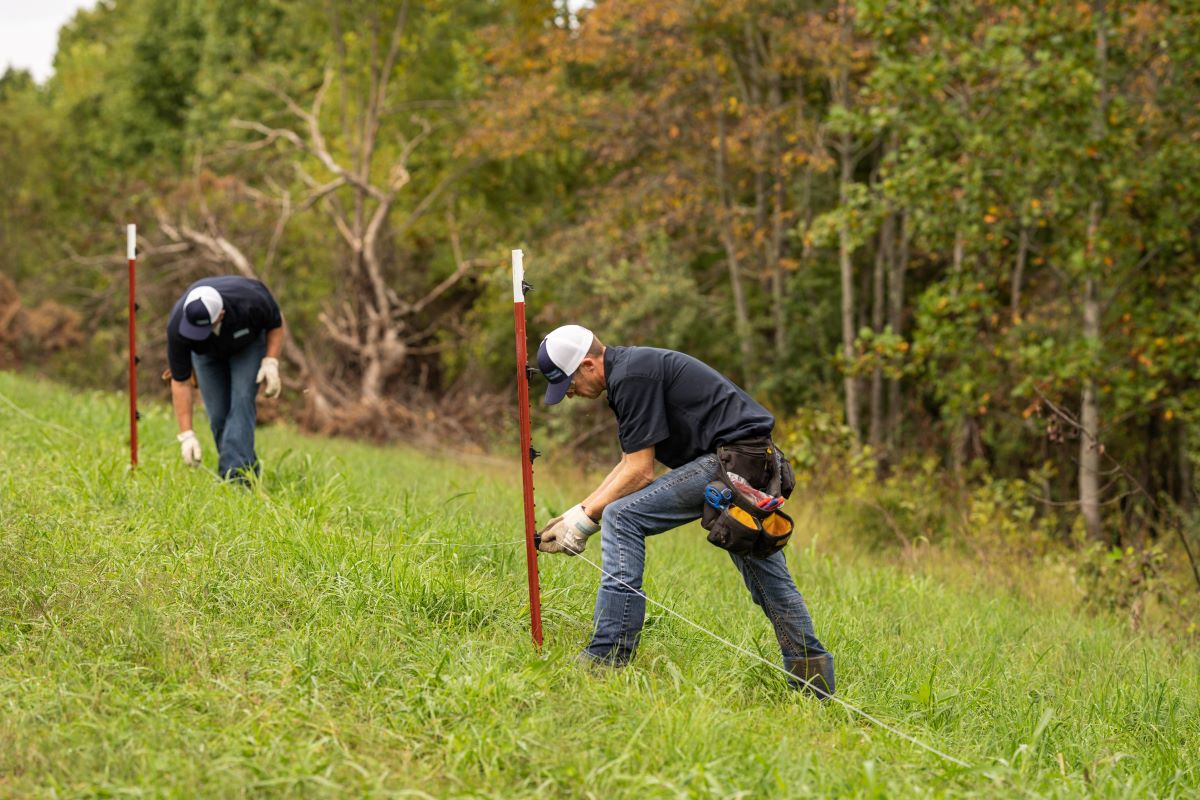

0 thoughts on “How To Train A Dog On An Electric Fence”